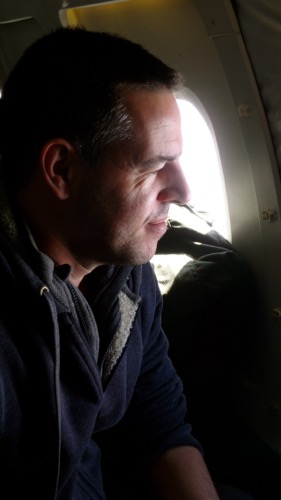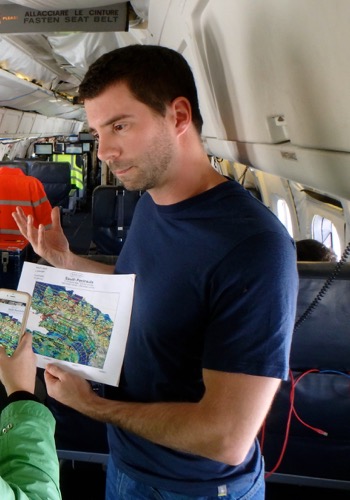Nearing The End
Nearing the end of my time with the NASA team made me want to spend as much time in flight as I possibly could, so lucky for me, we had a few flights ahead of us and good weather forecasted. With only a few high priority flights left on the list, the team was feeling really proud of their accomplishments and less anxious about getting the job done. As we set plans for our second trip to the South Pole, I felt grateful for the long flight ahead which would give me time with the amazing people on board, the scenery of Antarctica and a last chance to ask some questions.






Time Zone Mind Warp
The trip to the South Pole allowed us time to chat about science and grapple with a few concepts like time zones! How many time zones will we go through as we circle the pole at the 88th parallel? Take a look at this diagram and try to figure it out! John Sonntag and I had to draw out some diagrams to have the discussion of this concept to think through the ideas of "now its tomorrow"! He also challenged me to consider how we navigate on a sphere - there are no straight lines! This is all fun and tricky stuff!


Last Flight
And so my last flight came and went, and the sun set on my time flying with Operation IceBridge. While I still have several school visits to share about this mission in Santiago over the next few days, I can't help but to feel sad to see this experience end. I also am deeply concerned about the future of NASA's work on climate, polar ice and Earth science, and hope that in the years ahead, we keep our commitment to deep scientific learning so that we can better understand our planet.



Comments